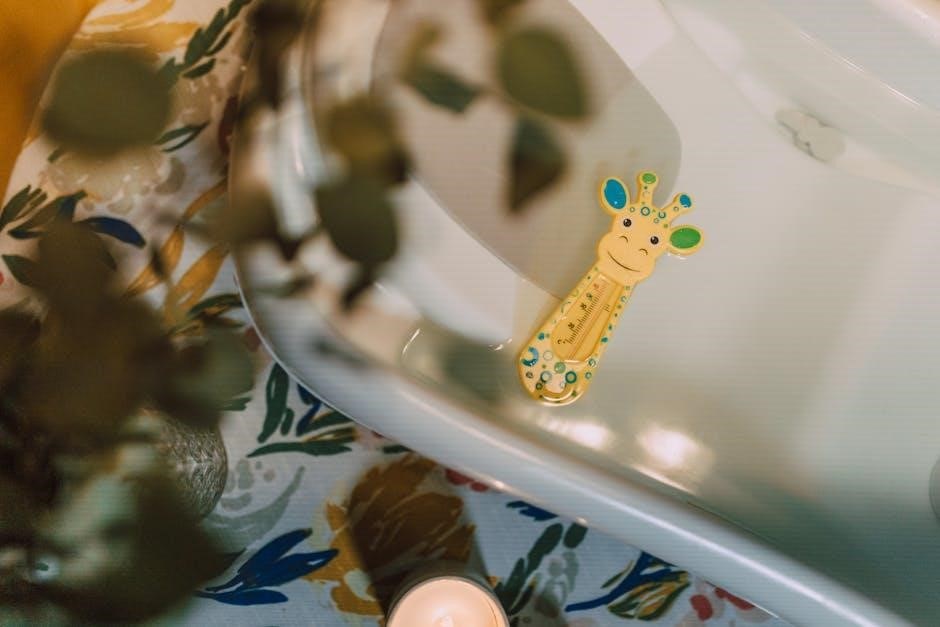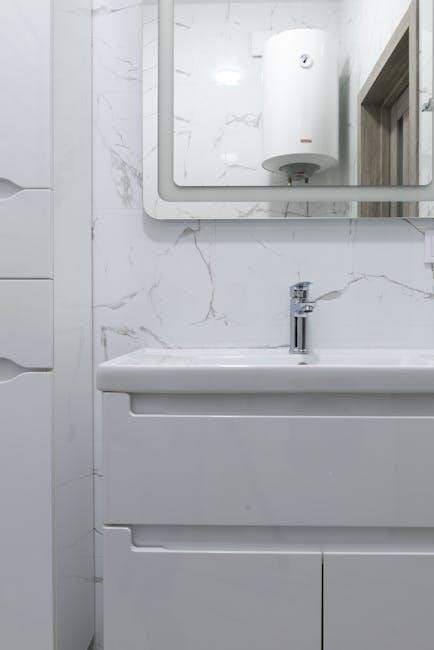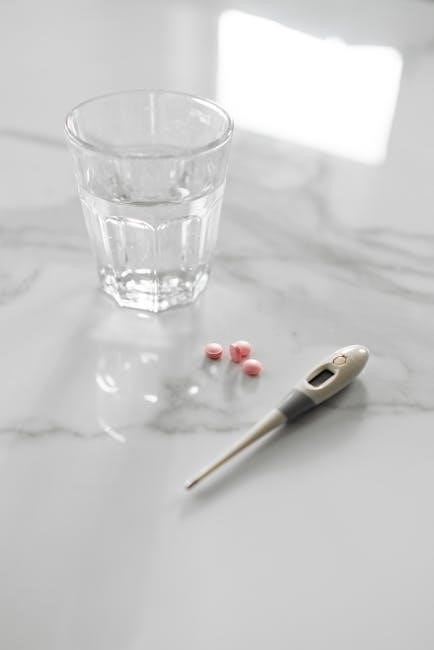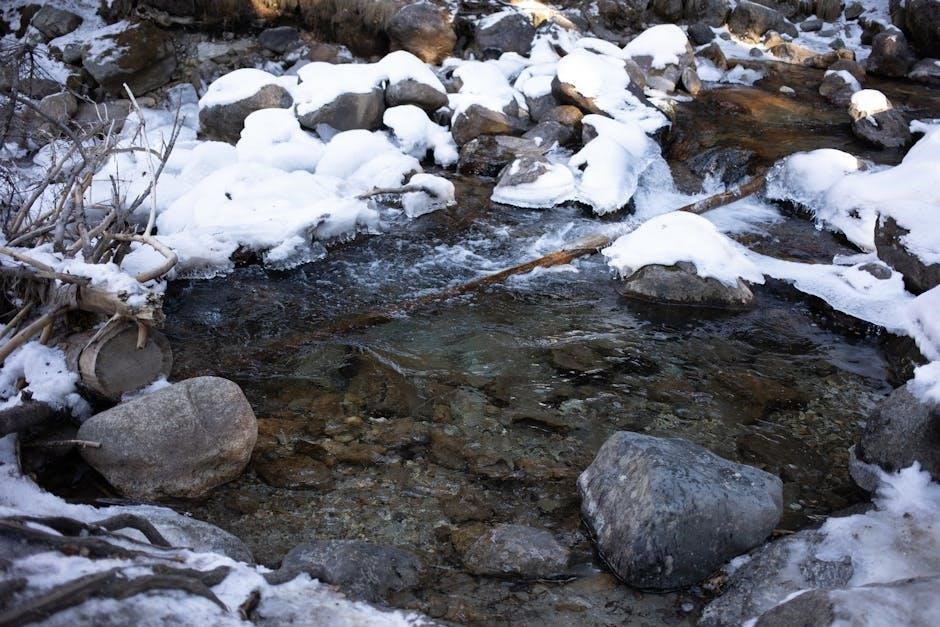A.O. Smith Water Heater Temperature Settings: An Overview
A.O. Smith water heaters offer adjustable thermostats for temperature control, but understanding proper settings is crucial. This overview covers recommended temperatures, adjustment procedures, troubleshooting, safety considerations, and resources like manuals and diagrams for optimal use.
A.O. Smith stands as a prominent name in water heating solutions, offering a diverse range of models designed for residential and commercial applications. These water heaters are equipped with adjustable thermostats, allowing users to manage water temperature according to their needs and preferences. Understanding the functionality and proper settings of these thermostats is paramount for ensuring both safety and efficiency.
A.O. Smith water heaters are known for their dependability and innovative features, including digital temperature controls in some models. The ability to regulate water temperature is a key aspect of their design, impacting energy consumption, risk of scalding, and the potential for bacterial growth, such as Legionella. Proper adjustment and maintenance are essential for optimal performance and longevity.
Understanding Temperature Adjustment in A.O. Smith Water Heaters
Adjusting the temperature on an A.O. Smith water heater involves understanding the thermostat mechanism and its relation to the actual water temperature. Many models feature a linear relationship between the dial’s angular rotation and the corresponding temperature change. For example, rotating the dial a certain number of degrees will result in a predictable change in water temperature.
The thermostat controls the heating element or gas burner, dictating when to heat the water based on the set temperature. It’s crucial to consult the water heater’s manual for specific instructions and wiring diagrams to ensure correct adjustments. Incorrect settings can lead to scalding risks, inefficient energy use, or even damage to the unit. Always prioritize safety and accuracy when modifying temperature settings.

Recommended Temperature Settings
Balancing safety and effectiveness is key when choosing water heater settings. Recommendations vary, with 120°F minimizing scald risks and higher temperatures like 135-140°F addressing Legionella concerns, per ASSE standards.
The 120°F Recommendation and Scald Prevention
Setting your A.O. Smith water heater to 120°F is widely recommended as a crucial safety measure to prevent scalding, especially for households with young children, the elderly, or individuals with disabilities. Hot water at higher temperatures can cause severe burns in a matter of seconds, posing a significant risk. Maintaining a lower temperature significantly reduces this risk, providing a safer environment for everyone.
According to burn-time charts, water at 120°F takes a considerably longer time to cause a serious burn compared to higher temperatures. This extra time allows individuals to react and avoid prolonged exposure, minimizing potential injury. While 120°F provides a safety margin, it’s still essential to exercise caution and supervise vulnerable individuals when using hot water.
Remember that even at 120°F, hot water can still scald, so awareness and responsible use are always necessary. This setting represents a balance between safety and adequate hot water supply for most household needs.
ASSE Recommendations: 135-140°F for Legionella Control
The American Society of Sanitary Engineering (ASSE) recommends maintaining water heater temperatures between 135°F and 140°F to control Legionella bacteria. Legionella can thrive in water heaters at lower temperatures and cause Legionnaires’ disease, a severe form of pneumonia. By maintaining this higher temperature range, the bacteria are effectively neutralized, reducing the risk of contamination and subsequent health issues.
It’s crucial to understand that while this temperature range is effective for Legionella control, it also increases the risk of scalding. Therefore, implementing anti-scald fixtures, such as thermostatic mixing valves (TMVs), is essential. TMVs blend hot and cold water to deliver a safe temperature at the point of use, typically around 120°F, mitigating the scalding hazard while still maintaining a high enough storage temperature to combat Legionella.
Consult with a qualified plumbing professional to determine the best approach for your specific situation, balancing Legionella control with scald prevention measures.

Adjusting the Temperature
Adjusting an A.O. Smith water heater involves locating the thermostat, understanding dial markings, and making small adjustments. Remember safety precautions, as higher temperatures pose scald risks, even at 120°F.
Locating the Thermostat and Temperature Dial
Finding the thermostat and temperature dial on your A.O. Smith water heater is the first step in adjusting the water temperature. Typically, you’ll need to access the control panel, which is often located behind a removable access panel on the front of the water heater. Be sure to turn off the power or gas supply to the water heater before removing any panels for safety.
Once the panel is removed, you should see one or two thermostats, depending on the model. Each thermostat has a dial or adjustment screw that controls the water temperature. The dial usually indicates temperature settings or a range from low to high. Examine the wiring diagram located on the water heater’s label to ensure proper identification. Before making any adjustments, carefully note the original settings. Also, remember that some models may have a high-limit reset button nearby, which might need attention if the water becomes excessively hot.
Step-by-Step Guide to Temperature Adjustment
After locating the thermostat, adjusting the temperature on your A.O. Smith water heater involves a few careful steps. First, ensure the power or gas supply to the unit is turned off to prevent any electrical hazards or gas leaks. Remove the access panel to expose the thermostat. Using a flathead screwdriver or the temperature dial, adjust the setting to your desired temperature. The recommended setting is typically 120°F to prevent scalding, but some may prefer slightly higher temperatures for sanitation purposes.
Make small adjustments, typically no more than 10-20 degrees Fahrenheit at a time. Wait several hours after each adjustment to allow the water to heat up and stabilize. Then, test the water temperature at a faucet to ensure it matches your desired setting. If necessary, repeat the adjustment process until the desired temperature is achieved. Once you’re satisfied with the temperature, replace the access panel and turn the power or gas supply back on.
Linear Relationship Between Dial Rotation and Temperature Change
A key aspect of understanding A.O. Smith water heater temperature adjustment is the linear relationship between the thermostat dial’s rotation and the subsequent change in water temperature. This means that a specific degree of angular rotation on the dial corresponds to a predictable temperature shift. For instance, rotating the temperature adjustment indicator by 30 angular degrees may result in an approximate 10°F change in the water temperature. This linear correlation enables users to make precise adjustments and fine-tune the water temperature to their preferred level.
It is important to note that while this linear relationship provides a useful guideline, slight variations may occur due to factors like incoming water temperature, ambient conditions, and the heater’s overall condition. Therefore, it’s always recommended to verify the actual water temperature after each adjustment using a thermometer to ensure accuracy and avoid scalding hazards.

Troubleshooting Temperature Issues
When your A.O. Smith water heater malfunctions, common problems include water being too hot or not hot enough. Identifying the causes and solutions ensures optimal performance and safety.
Water Too Hot: Causes and Solutions
If your A.O. Smith water heater is producing excessively hot water, several factors could be responsible. A primary cause is an improperly set thermostat, where the temperature dial is set too high. It’s essential to verify the thermostat setting and adjust it to the recommended 120°F to prevent scalding, especially for households with children or elderly individuals.
Another potential cause is a malfunctioning thermostat that isn’t accurately regulating the water temperature. In such cases, the thermostat may need replacement. Furthermore, short, repeated heating cycles resulting from small hot water uses can cause temperature spikes exceeding the heater’s set point. Also, if the water heater is in a hot environment, the water in the tank can become as hot as the surrounding air, regardless of the thermostat setting. Addressing these issues promptly ensures safe and efficient water heating.
Water Not Hot Enough: Potential Problems
Experiencing lukewarm or cold water from your A.O. Smith water heater can stem from several underlying issues. Firstly, the thermostat setting might be too low. Verify that the thermostat is set to the recommended 120°F or higher, depending on your needs and safety considerations. A faulty thermostat could also be the culprit, failing to heat the water to the set temperature. If the thermostat seems defective, consider replacing it.
Another possible cause is a tripped high-limit switch, which shuts off the heater if the water becomes excessively hot. Resetting the high-limit switch might restore functionality. Additionally, a malfunctioning heating element (in electric heaters) or a faulty gas valve (in gas heaters) can prevent the water from reaching the desired temperature. Addressing these potential problems involves careful inspection and repair or replacement of the faulty components.

Safety Considerations
Prioritize safety by understanding scald hazards, especially for vulnerable individuals. Regularly inspect the temperature and pressure relief valve to ensure it functions correctly, preventing dangerous pressure buildup within the tank.
Scald Hazards and Prevention
Scalding is a significant risk associated with hot water, especially for children, the elderly, and individuals with disabilities. Water at temperatures exceeding 125°F (52°C) can cause severe burns almost instantly, leading to serious injury or even death. A.O. Smith water heaters, even when set at the recommended 120°F, can still pose a scald hazard if precautions aren’t taken.
To prevent scalding, consider these measures: Lower the thermostat setting to 120°F to reduce the risk. Install anti-scald devices, such as thermostatic mixing valves, at faucets and showerheads to limit the water temperature. Always test the water temperature before entering a shower or bath, particularly for those at higher risk. Educate household members about the dangers of hot water and the importance of caution. Be mindful that short heating cycles can cause temperature spikes. Remember, even at 120°F, hot water can scald.
Temperature and Pressure Relief Valve Importance
The Temperature and Pressure Relief (TPR) valve is a critical safety component of your A.O. Smith water heater. Its primary function is to prevent excessive pressure and temperature buildup within the tank, which could lead to a dangerous explosion. If the temperature or pressure exceeds safe limits, the TPR valve automatically releases water to relieve the stress.
Regularly inspect the TPR valve to ensure it’s functioning correctly. Check for leaks or corrosion. Periodically test the valve by lifting the lever to release some water. Ensure the discharge pipe is properly installed and directs water safely away from people and property. A malfunctioning TPR valve can compromise the safety of your water heater and your home. If you notice any issues, contact a qualified technician immediately for inspection and repair or replacement. Never plug or obstruct the TPR valve, as this could lead to catastrophic failure.
Additional Resources
For detailed information, consult A.O. Smith manuals and wiring diagrams. These resources offer guidance on safe operation, maintenance, and troubleshooting temperature settings, ensuring optimal performance and safety.
A.O. Smith Manuals and Wiring Diagrams
Accessing the correct A.O. Smith manual and wiring diagram for your specific water heater model is essential for safe and effective operation. These documents provide comprehensive information regarding temperature adjustment, troubleshooting, and maintenance procedures. Wiring diagrams are critical for ensuring proper electrical connections during installation or repairs, preventing potential hazards.
The manuals typically include detailed instructions on locating the thermostat, understanding temperature dial markings, and adjusting the temperature to the desired setting. They also outline safety precautions, such as scald prevention measures and the importance of the temperature and pressure relief valve. Furthermore, these resources often contain troubleshooting guides to address common temperature-related issues, like water being too hot or not hot enough. Consulting these resources before making any adjustments or repairs can help ensure safe and efficient operation of your A.O. Smith water heater.
Finding A.O. Smith Water Heater Manuals in PDF Format
Locating your A.O. Smith water heater manual in PDF format is often the quickest way to access the information you need. Start by visiting the official A.O. Smith website, where they typically maintain a comprehensive library of manuals for their various models. You can search by model number, which is usually found on a label affixed to the water heater itself.
Alternatively, try searching online using the water heater’s model number along with the terms “manual” and “PDF.” Many third-party websites host collections of appliance manuals, but exercise caution and ensure the source is reputable to avoid downloading potentially harmful files. Once you’ve located the PDF manual, you can easily search within the document for specific keywords like “temperature adjustment,” “wiring diagram,” or “troubleshooting” to quickly find the information you require. Remember to verify that the manual corresponds to your exact water heater model to ensure accuracy.
